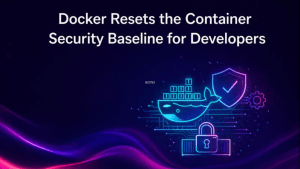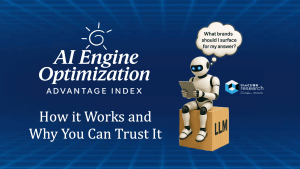
Of Hype and Hygiene: Getting Real About AI in the SOC with Elastic
Another Black Hat has come and gone, and if there was one takeaway from the neon-drenched halls of Mandalay Bay, it’s that the conversation around AI in cybersecurity is finally growing up. We’re moving past the “slap AI on it” phase and starting to ask the hard questions that actually matter to the folks in the trenches.
Sitting down with Mike Nichols, Elastic’s VP of Product Management, at both RSAC and again at Black Hat felt like getting a front-row seat to this evolution. We weren’t talking about a magical, monolithic AI that would solve all our problems. Instead, we were talking about a more practical, almost humble approach: using multiple, specialized AI agents for specific security tasks. It’s a shift from chasing a silver bullet to building a smarter toolkit.
This is the exact philosophy behind the new Elastic AI SOC Engine (EASE). Looking at what they’ve built, it’s clear this isn’t another vendor promising a “people-less SOC.” Thank goodness for that, because that idea is, frankly, bananas. Instead, EASE is a deliberate strategy aimed at augmenting, not replacing, the invaluable (if often exhausted) human security analyst.
Let’s dig into what EASE is, the problems it’s trying to solve, and whether it’s the dose of pragmatism the industry needs right now.
The SOC’s Groundhog Day: Why New Tech Isn’t Fixing Old Problems
Mike hit on something that we all know but maybe don’t say out loud enough: When a SIEM project fails (and a staggering 40% of them do), it’s usually not the tech’s fault. It’s a people and process problem. We buy the shiny new tool, but we don’t fix the underlying workflow. It’s like buying a Formula 1 car when your team has never even changed a tire. The process of migrating between platforms alone is a massive operational headache, just begging for human error to open up a security gap.
This is where Elastic first dipped its toes into AI with features like “Automatic Migration,” using LLMs to translate security rules between different platforms. It was a clear signal of their core philosophy: use AI for practical, assistive tasks that make people’s lives easier, and do it transparently.
The move to an “agentic AI” framework is the next logical step. Why? Because a single AI model is a hammer, and not every problem is a nail. As Mike put it, a successful AI strategy is about deploying “the right one for the right tasks.” You need a whole toolbox of regression models, deterministic agents, probabilistic ones and an architecture that lets you use them in concert. It’s a welcome dose of reality in a market drowning in hype.
But the most important part of this strategy is its view of the human analyst. The goal isn’t to make them obsolete; it’s to stop them from burning out. AI should handle what Mike calls the “crap work,” the repetitive, soul-crushing tasks of data collection, alert triage, and initial context gathering. Free up your analysts to do what they do best: hunt, investigate, and think strategically. If we do that, we might just lower the barrier to entry for this field, bringing in sharp analytical minds without demanding they already have a decade of niche technical experience.
So, What Is the Elastic AI SOC Engine (EASE)?
Against this backdrop of burnout and complexity, Elastic is rolling out EASE. And honestly, the name fits. Instead of another “rip-and-replace” ultimatum that makes every CISO’s eye twitch, EASE is designed to, well, ease your team into an AI-powered workflow.
It’s an AI-driven security analytics layer that plugs into your existing security stack. It’s not here to replace your SIEM or EDR; it’s here to make them smarter and make your team more effective.
Here’s a look under the hood:
Agentless Alert Ingestion: EASE has native, agentless integrations to pull alerts from the tools you already use, such as Splunk, Microsoft Sentinel, and CrowdStrike. TLDR: You can get started without a six-month migration headache and the associated therapy bills.
AI-Powered Alert Correlation (“Attack Discovery”): This is the core of the engine. “Attack Discovery” uses AI to automatically triage, correlate, and prioritize the flood of incoming alerts. It pieces together clues from your different tools to show you the full attack chain, mapping it all to the MITRE ATT&CK framework. Instead of a thousand disconnected data points, your analysts get a single, unified view of a potential campaign. Awesome.
Context-Aware AI Assistant: This is where it gets really interesting. The EASE AI assistant uses a Retrieval Augmented Generation (RAG) architecture. In plain English, it grounds its analysis in your internal, trusted knowledge—your SharePoint docs, Jira tickets, and GitHub repos. When your analyst asks, “Have we seen this before?” the assistant can give an answer that’s actually relevant to your environment, not some generic textbook response.
Model Flexibility and Transparency: This isn’t a “black box.” In keeping with their open-source roots, Elastic lets you choose your LLM. All AI-generated insights come with citations, so your analysts can see the receipts and verify the sources. It’s about building trust, not demanding blind faith.
Operational Metrics and ROI Tracking: EASE comes with out-of-the-box dashboards to track things such as Mean Time to Respond (MTTR) and alert triage times. This gives security leaders the hard data they need to prove to the board that their investment is actually paying off.
More Than Just a Good Idea: The Business Case
Now, it’s easy for a vendor to make big promises, but you have to look at whether they can actually deliver. And frankly, Elastic is in a pretty strong position. They’re not just a scrappy startup with a cool idea; they just pulled in nearly $1.5 billion in revenue last year. That kind of stability matters.
Even better, they’re not going it alone. Teaming up with giants like Google Cloud, NVIDIA, and AWS isn’t just good marketing; it means their tech is being integrated and validated at the very heart of the AI ecosystem. When Elasticsearch is a native option for Google’s Vertex AI and a recommended database for NVIDIA’s AI Factory, you know they’re building for the long haul.
Conclusion: A Pragmatic Path Forward
At the end of the day, the move to an AI-driven SOC isn’t about finding a magic bullet. It’s about finding the right tools to make our human experts better, faster, and maybe a little less likely to update their LinkedIn profiles at 2 a.m.
EASE looks like a solid step in that direction. It’s a pragmatic and strategically grounded approach that tackles real operational pain points. It’s not promising a people-less SOC, it’s promising a less-painful one. And in 2025, that might be the most welcome promise a security vendor can make.



